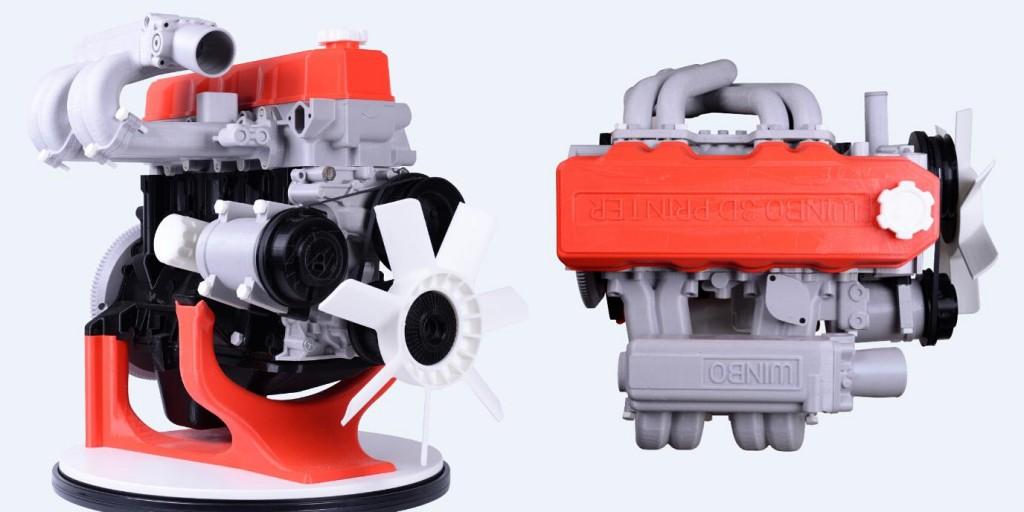When it comes to showing off what their line of 3D printers are capable of doing, Winbo certainly is not shy by any means. Offering almost a dozen different 3D printers with build sizes in all ranges, Winbo believes that they have a 3D printer for virtually everyone.
Recently representatives at Winbo decided to 3D print a piece of equipment that would show off all of the potential that their FFF/FDM based 3D printers provide to customers. In doing so, they 3D printed an entire engine from a design they found on Thingiverse, using nothing but 3D printed parts.
Ms. Suki of Winbo tells 3DPrint.com that the engine was made in order to show the world that the days of mold making may be coming to an end with the availability of affordable 3D printers which can create sturdy parts in a fraction of the time.
The 3D printed engine, which measures 55 cm x 49 cm x 46 cm in dimensions, was printed in just three days, using a Winbo Dragon (S) 3D Printer. The Dragon (S) is an FFF based printer that features a build volume of 458 x 305 x 508 mm, and can print using PLA or PETG filament. In fact, 18 of these 3D printers were utilized in order to create this semi-functional engine.
Suki tells us that the goal here was to show that traditional manufacturing techniques may soon be a thing of the past. If they wanted to produce this engine via the other techniques currently available, it would have taken 4-5 months, rather than just 3 days. Of course these 3D printers aren’t capable yet of printing metal engines, so that argument may be a mute one, but regardless, this is quite a cool creation on behalf of Winbo.
What do you think about this 3D printed engine? Discuss in the Winbo Engine forum thread on 3DPB.com.
